Stem Cells Breakthrough
- Posted 07.23.08
- NOVA scienceNOW
(This program is no longer available for online streaming.) In a July 2008 update on the controversial subject of stem cell research, NOVA scienceNOW explores a potentially revolutionary development. Japanese researcher Shinya Yamanaka first discovered how to take ordinary skin cells from an adult mouse, turn back their genetic clock, and transform them into the equivalent of embryonic stem cells. Yamanaka called them Induced Pluripotent Stem (iPS) cells. He and other biomedical researchers can now create human iPS cells without using human embryos, thus bypassing a political and ethical stumbling block that has hampered stem cell research.
Medical scientists are eager to explore the full potential of stem cells, which can grow into almost any type of cell in the body. Now they are a step closer to using this promising technology to treat a wide range of diseases. One experiment has already used iPS cells to cure mice of a sickle cell condition. Major hurdles remain, but the discovery of iPS cells is so important that Yamanaka is being touted as a candidate for a Nobel Prize.
Transcript
STEM CELLS BREAKTHROUGH
PBS Airdate: July 23, 2008
NEIL DeGRASSE TYSON: What if I made fettucini Alfredo and then decided what I really wanted was cheesecake? Could I turn one into the other? Well, maybe I could. If I could turn back time and go back to the original ingredients, then I could make something else, entirely.
This idea, of turning back the clock and rebuilding something from scratch is the basic premise behind stem cell research, which aims to transform one kind of cell into another.
Correspondent Chad Cohen reports recent groundbreaking discoveries seem to be bringing them that much closer to their goal.
AMIEL REID (Sickle Cell Anemia Patient): It feels like a lot of people are stabbing me with knives, from the inside of my body, all the way down to my bone. Sometimes I couldn't catch my breath it was so intense.
STEPHANIE TERMITUS (Sickle Cell Anemia Patient): I'm in tears, basically. It's just pain everywhere, it's going through your head, your back, your legs, and you can't do anything about it.
CHAD COHEN (Correspondent): Stephanie Termitus and Amiel Reid know the inside of Children's Hospital Boston better than any teenager should. They both suffer from sickle cell anemia. Instead of the plump, doughnut-shaped blood cells most of us have delivering oxygen to our organs, their blood cells are sickle-shaped, "banana," as Stephanie likes to say. These cells can't deliver oxygen very well, which causes the kids excruciating pain. Amiel's mom is on a first-name basis with the hospital staff.
LYNNIE REID (Mother of Sickle Cell Anemia Patient): They've given Amiel pain medication, and it doesn't take the pain completely away. It sort of numbs it. I mean, that's happened, where he's ended up in the intensive care unit for four months. So it's pretty serious.
GEORGE DALEY (Children's Hospital Boston): The misshapen, stiff red blood cells get sludged and clogged into the blood vessels that feed their organs and their muscles and their bones. And this is intensely painful.
CHAD COHEN: It's been 50 years since researchers found the cause for those misshapen blood cells, a single change in a single faulty gene. Sickle cell was the first genetic disease ever identified.
GEORGE DALEY: Give me a big, deep breath.
CHAD COHEN: Yet despite decades of searching for cures, all we can do is treat the symptoms, or in rare cases, perform bone marrow transplants, which are dangerous and carry a high risk of rejection.
GEORGE DALEY: And so this is a condition that we need a new approach for.
CHAD COHEN: Lately, that new approach has involved embryonic stem cells, cells that are "pluripotent," meaning they can grow into just about any cell in the body. When they were discovered, more than a decade ago, it was thought that stem cells could fix, not just sickle cells, but the damaged cells of countless diseases: Parkinson's, diabetes, A.L.S. That's what's driven George Daley, who also heads a stem cell lab, right across the street from his patients.
GEORGE DALEY: Thinking about the potential that this has for changing the way that we not only study disease, but one day treat disease, is really very, very exciting.
CHAD COHEN: But there's a problem. Stem cells, for the most part, come from human embryos, from that time, just after sperm meets egg, when we're made up of just a few dozen cells, and the function of those cells has yet to be determined. The main sources for the embryos are I.V.F. clinics, where surplus embryos are often discarded as medical waste. Still, harvesting the stem cells destroys the embryo and for many, that's morally wrong. Others believe that holding back medical progress is also wrong.
GEORGE DALEY: Here we are, at the dawn of this whole new field, all this excitement, all this possibility, and yet we're working with one hand tied behind our back.
CHAD COHEN: But in 2007, some experiments were conducted that many believe will finally bring the fighting to an end. Japanese researcher Shinya Yamanaka figured out a way to take an ordinary skin cell from an adult, turn back its genetic clock and transform it into the equivalent of an embryonic stem cell, no embryos required. Yamanaka's motivation came when he first glimpsed human embryos under a microscope about 10 years ago.
SHINYA YAMANAKA (Gladstone Institute, University of California, San Francisco): I have two daughters. And I thought, "The differences between those small embryos and my own daughters are very small."
CHAD COHEN: The realization presented some conflict for him, since, as a physician, he believed that embryonic stem cells were his best shot at treating disease.
SHINYA YAMANAKA: To me, treating patients and saving patients is the most important thing to do. But if we can avoid the usage of human embryos, we should avoid.
CHAD COHEN: Ironically, Yamanaka had to use embryonic stem cells in order to find a way to do without them. He started by exploring one of their fundamental properties. Virtually every cell in the human body has the same D.N.A. Heart cells, liver cells, skin cells, all share the same 20,000 genes. During our development as embryos, though, different genes in different cells get switched on and off, in different ways, and that's what creates all the different types of cells in our bodies. It's called cell programming. Yamanaka believed if he could find the gene switches responsible for programming stem cells, he could flip those same switches in adult cells, like skin cells, and re-program them back to the moment before their destinies were determined.
SHINYA YAMANAKA: Each cell has at least 20,000 genes, so that means we have to find those important switches from the 20,000 candidates.
CHAD COHEN: With so many genes to choose from, so many potential combinations, the search could have been infinitely complex.
GEORGE DALEY: Yamanaka's insight was to appreciate that it was a very limited set of genes. And he set out to identify them.
CHAD COHEN: First he reduced 20,000 possible gene candidates down to 100, using on-line databases. But then, the work got harder.
SHINYA YAMANAKA: We spent, like, three years to study the function of those 100 genes.
CHAD COHEN: Were there people saying, "Give up, there's no use in this?"
SHINYA YAMANAKA: Yeah, many people told me that this is going to be very difficult. "You will fail."
CHAD COHEN: Using specially engineered mice, called knockouts, he tested each gene's ability to make pluripotent stem cells, eliminating them, one by one. After more than three years, culturing hundreds of thousands of cells, Yamanaka narrowed the gene pool down to 24 genes, and finally four. Then came the moment of truth: getting these four painstakingly selected genes to make stem cells. He took some skin cells from an adult mouse, then used a virus to insert the four genes inside them. Two weeks later the skin cells in the Petri dish had completely transformed.
SHINYA YAMANAKA: We saw cells which looked like stem cells. So it was...at the moment, you know we were very, very excited, and we were very surprised.
CHAD COHEN: Yamanaka dubbed the cells "Induced Pluripotent Stem cells," or I.P.S. cells, and found they were virtually indistinguishable from embryonic stem cells.
I can't see a difference; I wouldn't expect to be able to see a difference, but...
SHINYA YAMANAKA: No, we can't see differences either. So these embryonic stem cells and Induced Pluripotent Stem cells are indistinguishable. They are the same cells.
CHAD COHEN: It's amazing.
GEORGE DALEY: Yamanaka's experiment was bold, some might say foolhardy. I think it's the type of experiment that would be laughed out of the room in a standard peer review study section. You would never have gotten your grant funded with that experiment.
CHAD COHEN: Really?
GEORGE DALEY: And now it's probably going to win Shinya Yamanaka a Nobel Prize.
CHAD COHEN: Creating stem cells without an embryo in mice certainly made headlines in the scientific community, but less than a year later came the news that caught the world's attention. Based on Yamanaka's work, three independent scientists, James Thomson in Wisconsin, George Daley in Boston and Yamanaka, himself, transformed human skin cells into I.P.S. stem cells. It was a monumental breakthrough, and in George Daley's case, the doctor even experimented on himself.
DERMATOLOGIST: So what we're going to be doing is just obtaining a small biopsy of the skin and...
GEORGE DALEY: We have a protocol where we can have anyone walk in, roll up their sleeve...we take a very small skin biopsy, smaller than the eraser at the end of a pencil.
DERMATOLOGIST: We'll just snip this, and we're good to go.
GEORGE DALEY: Fantastic.
And those skin cells are then put right into a Petri dish, and then, within a week, all of a sudden, this huge bloom of cells appears. And then you bring into them the three or four genes that do the re-programming.
What's really remarkable is that just simply putting those genes into the cell and making them work, starts this whole process. It takes those stable, specialized skin cells and erases all the skin functions, and reactivates, enlivens the embryonic functions and turns that skin cell back into a pluripotent embryonic cell. That's really...
CHAD COHEN: Back in time, basically.
GEORGE DALEY: It's back in time, I mean, it's like a whole altered universe. I mean, it's really changed the fundamental nature of that cell.
How many times would you say you've been in the hospital your whole life?
STEPHANIE TERMITUS: I can't even say it's so many; ten times a year?
CHAD COHEN: So, how long before this technology actually helps patients like Stephanie? Well, some serious challenges will have to be overcome first.
For one thing, that virus to shovel Yamanaka's four genes into adult cells can mutate a patient's D.N.A. and cause cancer. At least one of the four genes is an actual oncogene; it definitely causes cancer. And a high percentage of the mice created with these stem cells did develop cancer. But the promise of these cells far outweighs their problems, and, as we speak, researchers around the world are figuring out how to safely use them. Late in 2007, Rudolph Jaenisch, of the Whitehead Institute at M.I.T, demonstrated a powerful application of I.P.S. cells. He used them to cure sickle cell anemia in mice. To do it, he first had to give the mice the disease.
So you were able, basically, to give the mice sickle cell disease, and use that as a model?
RUDOLPH JAENISCH (Whitehead Institute, Massachusetts Institute of Technology): Yes. These mice were highly anemic. They had just stopped growing. They were very...rather small. They wouldn't gain weight, they would die early. I mean it was...it's a very faithful model of this major human disease.
You would take then a skin cell from this mouse and re-program it to I.P.S. cells.
CHAD COHEN: Jaenisch made the stem cells using Yamanaka's same four gene switches, but this time he removed that nasty oncogene once it had done its job.
RUDOLPH JAENISCH: So now these I.P.S. cells they didn't need anymore, they didn't have that oncogene. So that was useful. And then the next thing was we repaired the genetic defect by gene targeting.
CHAD COHEN: Jaenisch targeted that single sickle cell mutation, fixed it, then prompted the stem cells to become blood cells and injected them back into the mice. Since these cells came from the very same mice, they were a perfect match; there was no chance of rejection.
RUDOLPH JAENISCH: And to our—really—delight, the blood of the mouse totally normalized, and they begin to, began to gain weight. They have lived. As far as we know, they have no problem, so that they're totally cured, these mice, from the sickle cell condition.
CHAD COHEN: So have these new stem cells made embryonic stem cells obsolete? Well, until we know for sure whether they can faithfully grow into all the different cell types, the answer is definitely no.
GEORGE DALEY: I'm not willing to concede that I.P.S. cells will ever fully replace human embryonic stem cells. The embryonic stem cell line remains the gold standard.
Could you take a big deep breath?
It has been the most exciting past few years I could imagine, in my career. And I hope that it is translated into real treatments for my kids.
AMIEL REID: My favorite subject is science.
GEORGE DALEY: That's good! That's very good. We like to hear that.
AMIEL REID: The fact that they can take your own skin and turn it into something that can cure a disease like that, it's incredible.
Credits
Stem Cells Breakthrough
- Edited by
- Ben Ehrlich
- Produced and Directed by
- Dean Irwin
NOVA scienceNOW
- Executive Producer
- Samuel Fine
- Executive Editor
- Neil deGrasse Tyson
- Senior Series Producer
- Vincent Liota
- Supervising Producers
-
Stephen
Sweigart
Joey David - Editorial Producer
- Julia Cort
- Development Producer
- Vinita Mehta
- Senior Editor
- David Chmura
- Online Editor
- Laura Raimondo
- Series Production Assistant
- Fran Laks
- Assistant Editors
-
Susan Perla
Tung-Jen (Sunny) Chiang - Compositors
-
Brian Edgerton
Yunsik Noh - Music
- Rob Morsberger
- NOVA scienceNOW series animation
- Edgeworx
- Associate Producers
-
Melanie
Cunningham
Heeth Grantham
Joan Johnson
Molly Longstreth
Anthony Manupelli
Corey Norman - Camera
-
John Baynard
James Callanan
Brian Dowley
Mike Elwell
Tom Fahey
Sean Glenn - Sound Recordists
-
Brad Berghom
Clint Bramesco
John Cameron
Tom Eichler
Bill Stefanacci
Dick Williams - Sound Mix
- David Chmura
- Animation
-
Eyeball
Carlo Flores
Anthony Kraus, Noisy Neighbor Productions
Zaldy Serrano - Production Assistants
-
Jared Flynn
Elizabeth Stachow
Robin Wiesner - For Lone Wolf Documentary Group
- Executive Producer
- Kirk Wolfinger
- Production Manager
- Donna Huttemann
- For Public Broadcasting for Northern California, KQED
- Executive producer
- Sue Ellen McCann
- Business Manager
- Sandy Schonning
- Archival Material
-
California High Speed Rail Authority
Corbis
Mary Evans / Photo Researchers, Inc.
Ship and submersible footage courtesy of Harbor Branch Oceanographic Institute
NASA / STScI
Newlands and Company, Inc.
Orion Treasury Project Team
Orwell Astronomical Society (OASI)
SETI Institute
University of Alabama at Birmingham Department of Pathology PEIR Digital Library
U.S. National Library of Medicine
Edie Widder
Nikica Zaninovic, Richard Bodine, Roger Gosden, Zev Rosenwaks, Lucinda Veeck Gosden at the Center for Reproductive Medicine and Infertility
Embryology Laboratory, Weill Cornell Medical College, New York. - Special Thanks
-
American Museum of Natural History
Beth Israel Deaconess Medical Center
Harbor Branch Oceanographic Institute
Christy Herren
Tom Kilsdonk, SETI Institute
Kevin Langton
John Lewis
Larry Madin
Illustrator Janeen Mason
Michael Nank
Chris Neller, SETI Institute
The ORCA Team
Karen Randall, SETI Institute
Brad Seibel
Yankee - Neil deGrasse Tyson
- is director of the Hayden Planetarium in the Rose Center for Earth and Space at the American Museum of Natural History.
- NOVA scienceNOW Consortium Stations
-
Nebraska
Educational Telecommunications, NET
Public Broadcasting for Northern California, KQED
Twin Cities Public Television, TPT
Wisconsin Public Television, WPT - NOVA Series Graphics
- yU + co.
- NOVA Theme Music
-
Walter Werzowa
John Luker
Musikvergnuegen, Inc. - Additional NOVA Theme Music
-
Ray Loring
Rob Morsberger - Post Production Online Editor
- Spencer Gentry
- Closed Captioning
- The Caption Center
- Publicity
-
Carole McFall
Eileen Campion
Lindsay de la Rigaudiere
Victoria Louie
Kate Becker - Senior researcher
- Gaia Remerowski
- Production Coordinator
- Linda Callahan
- Paralegals
-
Raphael Nemes
Sarah Erlandson - Talent Relations
-
Scott Kardel, Esq.
Janice Flood - Legal Counsel
- Susan Rosen
- Post Production Assistant
- Darcy Forlenza
- Associate Producer, Post Production
- Patrick Carey
- Post Production Supervisor
- Regina O'Toole
- Post Production Editors
-
Rebecca Nieto
Alex Kreuter - Post Production Manager
- Nathan Gunner
- Compliance Manager
- Linzy Emery
- Development Producer
- Pamela Rosenstein
- Business Manager
- Joseph P. Tracy
- Senior Producer and Project Director
- Lisa Mirowitz
- Coordinating Producer
- Laurie Cahalane
- Senior Science Editor
- Evan Hadingham
- Senior Series Producer
- Melanie Wallace
- Managing Director
- Alan Ritsko
- Senior Executive Producer
- Paula S. Apsell
This material is based upon work supported by the National Science Foundation under Grant No. 0638931. Any opinions, findings, and conclusions or recommendations expressed in this material are those of the author(s) and do not necessarily reflect the views of the National Science Foundation
NOVA scienceNOW is a trademark of the WGBH Educational Foundation
NOVA scienceNOW is produced for WGBH/Boston by NOVA
© 2008 WGBH Educational Foundation
All rights reserved
- Image credit: (induced pluripotent stem cells) Courtesy Shinya Yamanaka
Participants
- Chad Cohen
- Correspondent
- George Daley
- Children's Hospital Boston www.childrenshospital.org/cfapps/research/data_admin/Site92/mainpageS92P0.html
- Rudolph Jaenisch
- Whitehead Institute www.wi.mit.edu/research/faculty/jaenisch.html
- Lynnie Reid
- Mother of patient
- Shinya Yamanaka
- Gladstone Institute, University of California, San Francisco www.gladstone.ucsf.edu/gladstone/site/yamanaka/
Related Links
-
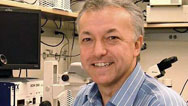
Stem Cells Breakthrough: Q&A
George Daley of Children's Hospital Boston answers questions about stem cell research.
-
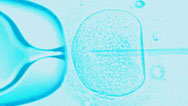
Stem Cells Poll
Should we create human embryonic stem cells through cloning?
-
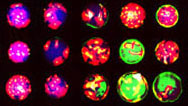
Stem Cells: 2006 Update
A fraudulent South Korean researcher is unmasked, and scientists find a new technique for easing ethical concerns.
-
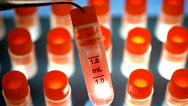
Stem Cells: Early Research
NOVA scienceNOW's first story on stem cells covered the hopes and controversies of stem cell research in 2005.
-
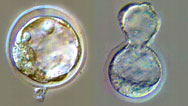
The Cloning Process
Microphotographs show step-by-step how scientists create a cloned mouse embryo to generate embryonic stem cells.
-

Stem Cells Breakthrough
Research how stem cells become specialized cells, and summarize your findings with flowcharts and clay models.
-

Stem Cells Breakthrough
Follow the process that led to a revolutionary method for creating stem cells without the use of human embryos.



